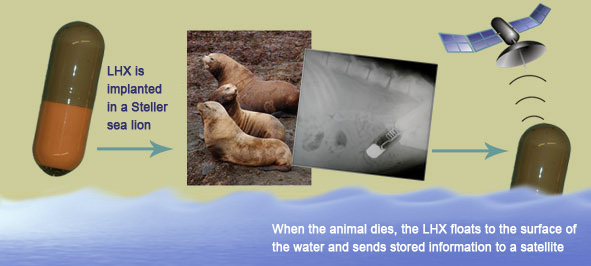How We Use Telemetry
In the summer of 1998, researcher Dr. Markus Horning (then at Texas A&M University and working with the National Marine Fisheries Service) was surveying in a small plane along the Aleutian Islands for Steller sea lions. Where there should have been many sea lions, he saw only a few lonely males, waiting for females to return. He wondered about why the population had declined and why it was not recovering, and what technology he could use to discover how Steller sea lions were dying. Dr. Horning eventually partnered with Dr. Roger Hill at Wildlife Computers to design a telemetry device, the Life History Transmitter (LHX) that could help him understand what was happening.
The LHX looks like a capsule implanted inside the body cavity of the Steller sea lion. The LXH collects and stores information on the animal’s body temperature and other measurements throughout its life. Once a Steller sea lion with an LHX tag dies, it decays or gets eaten. Eventually the tag comes out of the body and floats to the surface. The LHX tag then sends its stored information to a satellite and from there to a ground station. Finally the scientist receives an email with the animal’s body temperature information before and after death along with a location. Just like a coroner, scientists can use these temperature measurements to discover the cause of death. Discover how >>.
